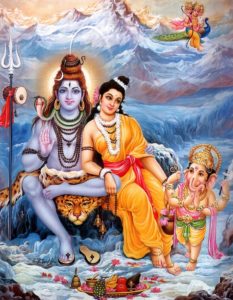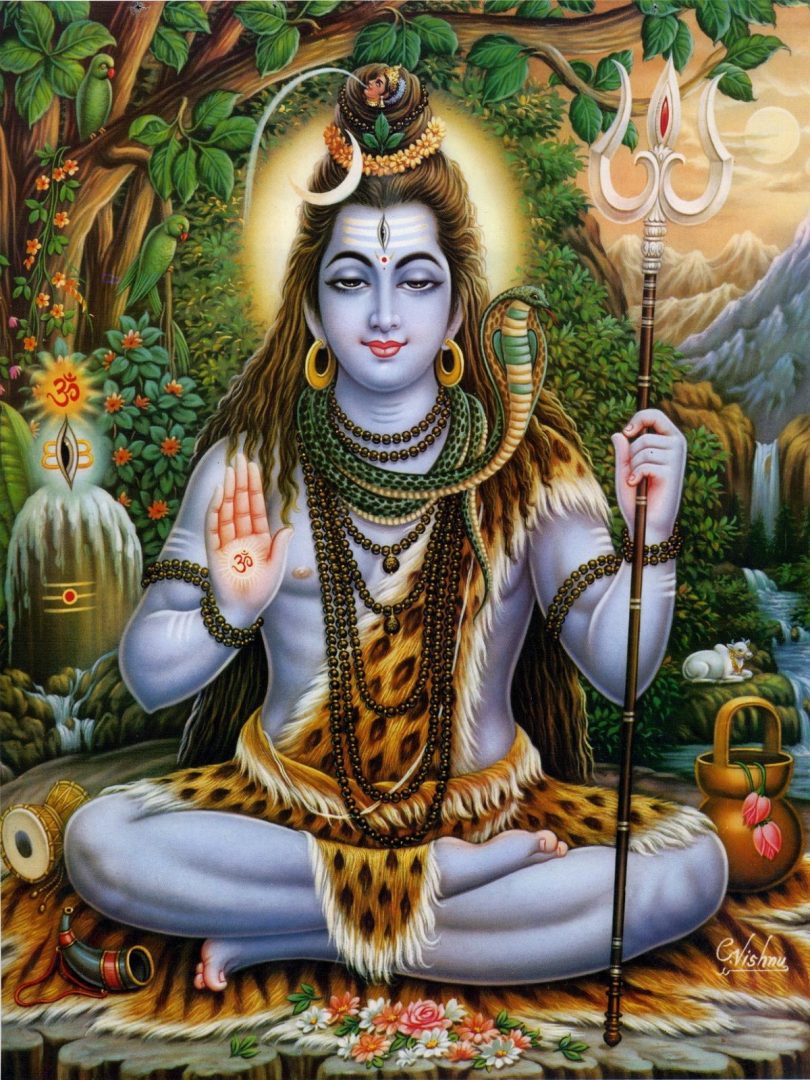Hinduism is among the world’s oldest religions and boasts over 900 million followers around the globe. Over 80% of the population of India consider themselves to be Hindu. The Hindu religion teaches that there is one God, Brahman, who created and is present in everything. However, Hindus worship many other lesser deities as well, the most important of which are Brahma, Vishnu, and Shiva. Hindus believe that Brahman’s work on Earth is done and that this triumvirate has taken over Brahman’s role of creating, maintaining and destroying the world.
 Brahma takes on the role of creator of the universe and Vishnu that of its preserver and protector. Shiva, the third god in the Hindu triumvirate takes on the role of destroyer of the universe.
Brahma takes on the role of creator of the universe and Vishnu that of its preserver and protector. Shiva, the third god in the Hindu triumvirate takes on the role of destroyer of the universe.
To those unfamiliar with the Hindu religion, it may seem strange that anyone would worship a being whose main purpose is to destroy the universe. However, Hindus believe that Shiva’s destruction of the illusions and imperfections of the world paves the way for beneficial change. Therefore Shiva is a very contradictory being and is viewed as the source of both good and evil, sometimes playing the role of ascetic and other times that of a hedonist. These behavioral extremes are attributed in part to his untamed passion.
It is his wife, Parvati, who helps to bring Shiva into balance. Within this union, Shiva is able to be both an ascetic and a lover.
In the Hindu religion, Shiva is also celebrated as the master of the dance, which is an important art form in India. Among Hindus, the rhythm of dance serves as a metaphor for the balance in the universe that Shiva creates. Stories of Shiva as “the Lord of the dance” are important in Hindu mythology.
Shiva has been represented in many different ways within the Hindu tradition. Often he is represented with a human body, always with a blue face and throat. According to Hindu belief, his body is white in color, but some images depict him with a blue body as well.
Four important features of Shiva
Shiva third eye
The first is a third eye, which represents wisdom and insight. It is also believed to be the source of his untamed energy and passion. The second item is a cobra necklace, which signifies Shiva’s power over even the most dangerous creatures of the world. Others believe that the cobra and the shedding of its skin also represent Shiva’s powers of destruction and recreation. The third important feature is the vibhuti, three lines of white ash drawn across his forehead. These lines represent Shiva’s all-pervading nature and his superhuman power and wealth. They also serve to cover up his powerful third eye. Worshippers of Shiva often draw these vibhuti lines across their own foreheads. The fourth and final item is the three-pronged trident, which represents the three different functions of the Hindu triumvirate (Shiva, Brahma, and Vishnu).
Shiva dressed in Animal skin
While other Hindu gods are often depicted in very lavish surroundings, Shiva is typically dressed very simply in animal skin and among very plain settings. He is usually represented sitting in a yogic position. He is rarely depicted without his wife Parvati closely at his side, demonstrating the importance and equality of their relationship. Ironically, despite his untamed ways and role as destroyer, Shiva is typically represented as very tranquil, with a warm smile upon his face.
Shiva as half-man, half-woman
Shiva is represented in other ways as well, sometimes as a half-man, half-woman. In this case, his figure is split in two, one half representing his body and the other half that of Parvati. This image once again stresses the equality of their relationship and the ability that Parvati has to keep her husband in balance.
Shiva as phallic statue
A third representation, Shiva linga is not that of a human being, but rather a phallic statue. This statue represents Shiva’s masculinity and raw power. It is also thought to represent Shiva’s role as creator. Worshippers of Shiva celebrate a festival known as Mahashivratri, where this phallic statue is bathed in water, milk and honey.
According to Hindu tradition, Shiva and his wife Parvati reside in the Kallash mountains located in the Himalayas. The couple is considered the perfect example of marital bliss by many Hindus. Unlike Shiva who is a god himself, Parvati is just one incarnation of a goddess. Devi, the mother-goddess has taken on many other forms over the years, including Kali, the goddess of death and Sati, the goddess of marital felicity. Her role as Shiva’s eternal wife, however, is her best known and most widely celebrated incarnation.






